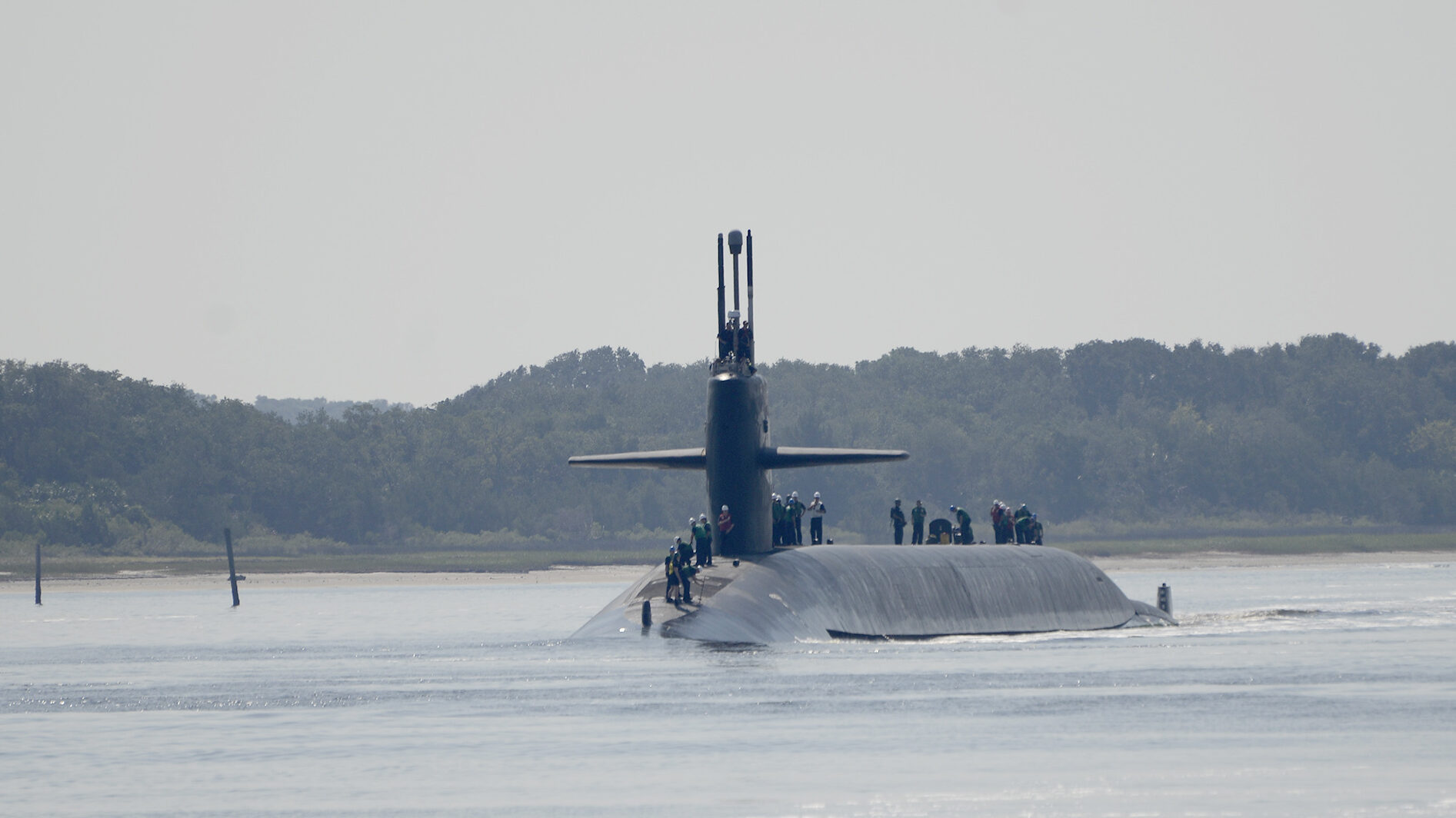
The Ohio-class ballistic-missile submarine USS Alaska (SSBN 732)(Gold) returns to its homeport at Naval Submarine Base Kings Bay, Ga. (U.S. Navy photo by Mass Communication Specialist 1st Class Ashley Berumen)
WASHINGTON — The US Navy’s unfunded priorities list this year comes in at roughly $2.2 billion with additional funding for the submarine industrial base and to repair infrastructure damaged by Super Typhoon Mawar in Guam topping the service’s annual wishlist, according to the request obtained by Breaking Defense.
The unfunded priorities lists (UPL), which the Pentagon is legally required to submit to lawmakers alongside their budget submissions, are drafted by service chiefs and combatant commanders. They outline various priorities that were left out of the president’s formal budget request, but the respective admirals and generals say are worthwhile priorities that would have been funded had they been given a higher topline.
Lawmakers in the past have regularly added funding to the Pentagon’s budget requests to fulfill certain UPL items when they saw fit, but it’s not clear this year what flexibility Congress will have to do that given the overarching spending restraints put in place by the Fiscal Responsibility Act of 2023.
For the Navy, whose UPL was submitted by Chief of Naval Operations Adm. Lisa Franchetti, the top two items make up nearly 50 percent of the overall request. The number one item is an additional $403 million that would be directed towards workforce and supplier development for the submarine industrial base. The UPL explains, however, that that item is essentially a backup in case lawmakers do not pass the National Security Supplemental request, which provides billions in aid to Ukraine and Israel but send roughly $3.4 billion to the submarine industrial base.
RELATED: Ukraine, Israel, submarines: What’s in Biden’s $105B supplemental request
Navy leadership during their formal budget rollout made clear that undersea warfare capabilities and the submarine industrial base is a top priority, emphasizing that they would seek more than $11 billion in industrial base development funding throughout the future years defense program.
“These funds would increase production rates and submarine availability through initiatives in supplier development, shipbuilder and supplier infrastructure, workforce development, technology advancements, and strategic sourcing. SIB investments directly support AUKUS partnerships that strengthen Indo-Pacific security,” according to the document.
Although it’s rated as the Navy’s second highest priority on the new UPL, $600 million to repair infrastructure on Guam damaged during Super Typhoon Mawar in May 2023 is the costliest item on the list. According to the document, the administration previously sought $900 million in a “critical domestic needs supplemental request” to “repair various structures and facilities” damaged by Mawar.
“If the Critical Domestic Needs Supplemental is not appropriated in FY24, then the disaster relief funding for Guam recovery becomes an unfunded priority in FY25. The Glass Breakwater was significantly damaged by the typhoon and is at risk of failure, which would restrict the use of Apra Harbor. This funds repair of the Breakwater as a high priority to ensure the integrity of Apra Harbor and the Navy’s ability to sustain forces, and reduce risk to mobilize and transport joint forces during short notice responses,” it says.
Glass Breakwater refers to a piece of infrastructure, originally built by US Navy “Seabees,” or construction battalions, enveloping the Apra Harbor that helps to protect vessels against the powerful waves coming from the sea as they transit in and out of port.
The service’s third top priority addresses obsolescence issues in the service’s nuclear command, control and communications programs, with a price tag of roughly $105 million. Following that are two items for $30 million and $60 million, both of which are only described as classified programs.
Replacing expended SM-2 missiles used during recent operations in the Red Sea is also on this year’s UPL for just over $92 million.
“Navy currently has a backlog of SM-2s ready for recertification,” according to the document. “These assets are in the inventory, but are non-combat usable (i.e. not available to fill [Vertical Launching System] cells for combat) until they are recertified. [The regular budget] included $157M for Standard Missile weapons maintenance in FY24, and PB-25 includes $134M in FY25.”
Further down the list, the CNO also named accelerating the Orca Extra Large Unmanned Undersea Vehicle program ($184 million), procurement of the Mk-48 Heavyweight Torpedo ($50 million) and funding numerous surface warfare systems ($200 million) as unfunded priorities.
In a separate list dedicated to military construction items, Franchetti included $1.4 billion worth of infrastructure items related to a water treatment plant in Honolulu, a Navy dry dock in Pearl Harbor due to be revitalized by the Shipyard Infrastructure Optimization Plan and improvements at the Fallon Range Training Complex in Nevada.






















